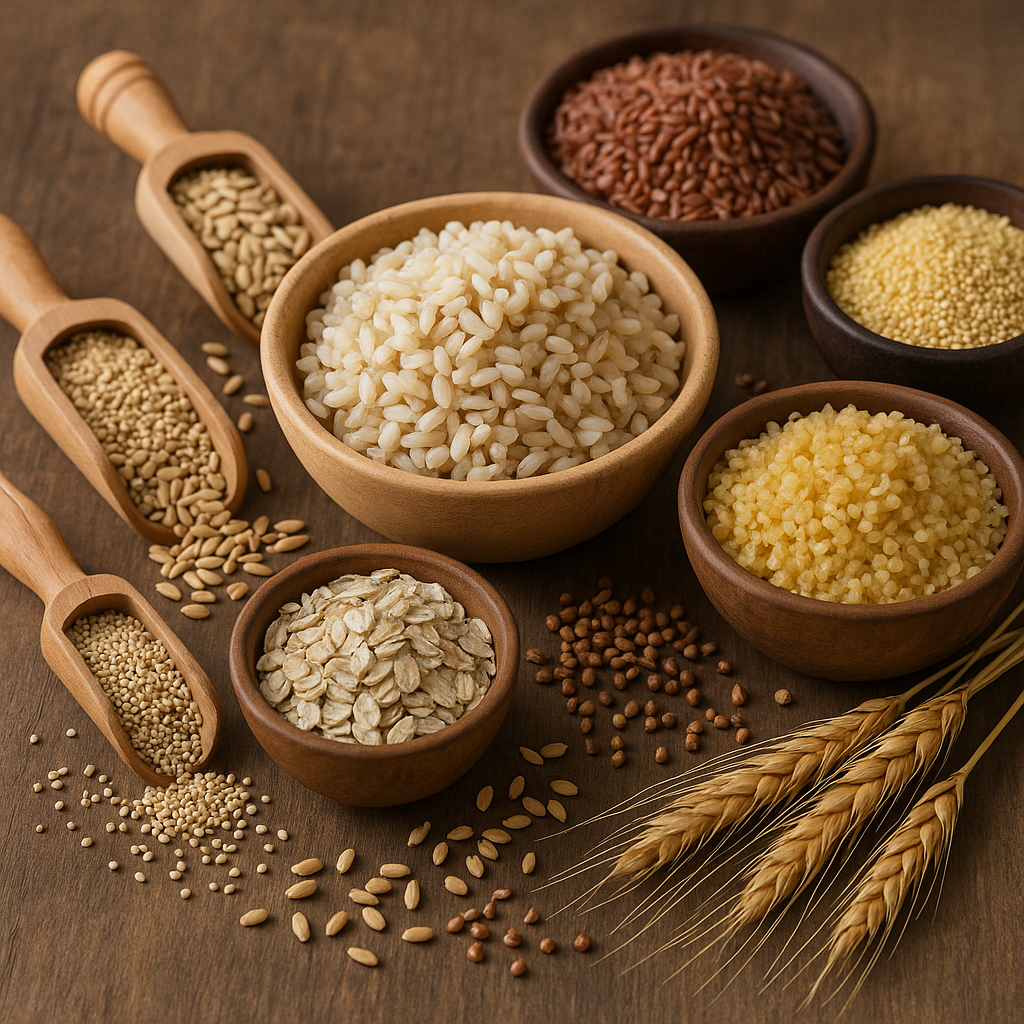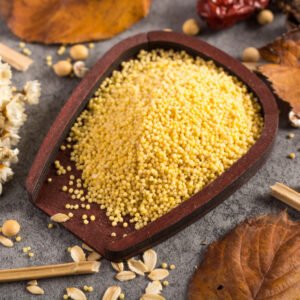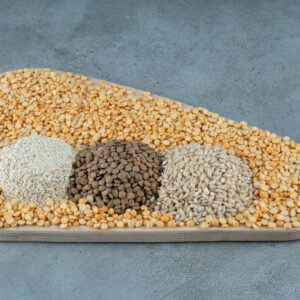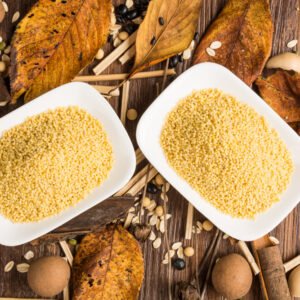Did you know that the average person consumes only half the recommended daily fiber intake? This nutritional gap has contributed to rising rates of digestive disorders, heart disease, and diabetes worldwide. The solution might be simpler than you think: incorporating high fiber grains into your daily meals.
High fiber grains represent one of nature’s most powerful tools for optimizing health, yet many people remain unaware of their incredible benefits. From ancient varieties that sustained civilizations to modern nutritional powerhouses, these grains offer a pathway to better wellness through improved digestion, enhanced heart health, and sustainable weight management.
Understanding High Fiber Grains: The Nutritional Foundation
High fiber grains are whole grains that retain their bran, germ, and endosperm layers during processing. Unlike refined grains that strip away these nutrient-rich components, whole grains preserve their natural fiber content along with essential vitamins, minerals, and antioxidants.
The fiber content in grains varies significantly, but high-fiber varieties typically contain 3-15 grams of fiber per serving. This dietary fiber comes in two forms: soluble fiber that dissolves in water to form a gel-like substance, and insoluble fiber that adds bulk to stool and promotes regular bowel movements.
Why Fiber Content Matters in Your Diet
Dietary fiber plays crucial roles in maintaining optimal health. It regulates blood sugar levels by slowing glucose absorption, supports healthy cholesterol levels, and feeds beneficial gut bacteria. The recommended daily fiber intake is 25 grams for women and 38 grams for men, yet most people consume far less.
Top High Fiber Grains for Optimal Health
Quinoa: The Complete Protein Powerhouse
Quinoa stands out among high fiber grains as a complete protein source containing all nine essential amino acids. With approximately 5 grams of fiber per cooked cup, quinoa supports muscle development while promoting digestive health.
This ancient grain originated in the Andes Mountains and has gained global recognition for its exceptional nutritional profile. Beyond fiber, quinoa provides magnesium, iron, and folate, making it an excellent choice for vegetarians and health-conscious individuals.
Oats: Heart-Healthy Fiber Champions
Oats contain beta-glucan, a specialized type of soluble fiber that actively reduces LDL cholesterol levels. A single cup of cooked oats delivers approximately 4 grams of fiber, making it an ideal breakfast choice for cardiovascular health.
Steel-cut oats offer superior nutritional benefits compared to instant varieties, as they undergo minimal processing. The slower digestion of steel-cut oats provides sustained energy throughout the morning while supporting stable blood sugar levels.
Brown Rice: The Versatile Staple
Brown rice retains its bran layer, providing 3.5 grams of fiber per cooked cup. This whole grain alternative to white rice offers superior nutritional value while maintaining the familiar taste and texture that makes it universally appealing.
The selenium content in brown rice supports thyroid function and provides antioxidant protection. Additionally, brown rice contains manganese, which plays a vital role in bone development and wound healing.
Barley: The Cholesterol-Fighting Champion
Barley ranks among the highest fiber grains, delivering up to 6 grams of fiber per cooked cup. The beta-glucan fiber in barley effectively lowers cholesterol levels and supports heart health through multiple mechanisms.
Pearl barley, while slightly processed, still maintains significant fiber content and cooks faster than hulled barley. Both varieties provide excellent sources of vitamins B1, B3, and selenium.
Bulgur Wheat: Mediterranean Nutrition
Bulgur wheat offers 8 grams of fiber per cooked cup, making it one of the most fiber-dense grain options available. This pre-cooked cracked wheat requires minimal preparation time while delivering maximum nutritional benefits.
Popular in Middle Eastern cuisine, bulgur wheat provides a nutty flavor and satisfying texture that works well in salads, pilafs, and stuffings. Its high fiber content promotes satiety and supports healthy weight management.
Health Benefits of High Fiber Grains and Their Benefits
Digestive Health Optimization
High fiber grains promote regular bowel movements and prevent constipation through their insoluble fiber content. The prebiotic properties of grain fiber feed beneficial gut bacteria, supporting a healthy microbiome balance.
Regular consumption of fiber-rich grains reduces the risk of colorectal cancer and inflammatory bowel conditions. The bulk-forming properties of grain fiber help maintain healthy intestinal function and promote toxin elimination.
Cardiovascular Protection
The soluble fiber in grains binds to cholesterol in the digestive system, preventing its absorption into the bloodstream. Studies consistently show that individuals who consume adequate amounts of whole grain fiber experience lower rates of heart disease.
High fiber grains also help regulate blood pressure through their potassium and magnesium content. The anti-inflammatory compounds in whole grains protect blood vessels from damage and support overall cardiovascular function.
Blood Sugar Management
Fiber-rich grains slow the absorption of glucose, preventing rapid spikes in blood sugar levels. This steady glucose release supports sustained energy and reduces the risk of developing type 2 diabetes.
The chromium content in many whole grains enhances insulin sensitivity, further supporting healthy blood sugar control. Regular consumption of high fiber grains can improve long-term glycemic control in both diabetic and pre-diabetic individuals.
Weight Management Support
High fiber grains promote satiety by increasing meal volume without adding excessive calories. The slow digestion of fiber-rich foods helps control appetite and reduces overall caloric intake.
The thermogenic effect of digesting fiber burns additional calories, supporting weight loss efforts. Studies show that people who consume adequate fiber maintain healthier body weights over time.
Practical Tips for Incorporating High Fiber Grains
Gradual Introduction Strategy
Start by replacing refined grains with whole grain alternatives one meal at a time. This gradual approach allows your digestive system to adjust to increased fiber intake without discomfort. Trusted Food Grains Manufacturer, Supplier & Exporter in India, like CMS Industries, can help you make this transition with quality grains.
Begin with milder-tasting options like brown rice or oats before progressing to stronger-flavored grains like quinoa or barley. Increase fiber intake by 5 grams per week to minimize digestive disruption.
Preparation Methods for Maximum Benefits
Proper cooking techniques preserve the nutritional integrity of high fiber grains. Soaking grains overnight reduces cooking time and improves digestibility by breaking down enzyme inhibitors.
Use the absorption method for cooking grains, where water is completely absorbed during cooking. This technique retains more nutrients compared to boiling and draining methods.
Storage and Quality Considerations
Store whole grains in airtight containers in cool, dry locations to prevent rancidity. Whole grains contain natural oils that can spoil more quickly than refined grains, so proper storage ensures maximum nutritional benefits.
When sourcing high-quality grains, consider working with established agricultural suppliers who prioritize sustainable farming practices and product quality. Companies like CMS Industries, based in Gujarat, India, specialize in providing premium grains and agricultural products that meet international quality standards through their expertise in grain processing and export.
Overcoming Common Challenges
Addressing Digestive Sensitivity
Some individuals experience bloating or gas when first increasing fiber intake. Combat this by drinking plenty of water, starting with smaller portions, and choosing easier-to-digest options like white rice initially.
Cooking grains thoroughly and chewing them well improves digestibility. Adding digestive spices like ginger or fennel to grain dishes can further reduce potential discomfort.
Flavor Enhancement Techniques
Many people find plain grains boring, but simple seasonings transform their appeal. Toast grains before cooking to develop nutty flavors, or cook them in vegetable or chicken broth instead of water.
Mix cooked grains with herbs, spices, vegetables, or nuts to create satisfying and flavorful meals. Mediterranean and Asian cooking traditions offer countless inspiration for making grains delicious and nutritious.
The Future of Grain Nutrition
Agricultural innovation continues to develop new grain varieties with enhanced nutritional profiles. Ancient grains are experiencing renewed interest as consumers seek diverse, nutrient-dense food options.
Sustainable farming practices ensure that high-quality grains remain available while protecting environmental resources. Supporting companies that prioritize sustainable agriculture helps maintain access to premium grain products for future generations.
Conclusion
High fiber grains and their benefits extend far beyond simple nutrition – they represent a foundation for long-term health and wellness. From supporting digestive health to protecting cardiovascular function, these nutritional powerhouses offer scientifically-proven benefits that improve quality of life.
The journey toward better health doesn’t require dramatic dietary overhauls. Simple substitutions like choosing brown rice over white rice, adding quinoa to salads, or starting your day with steel-cut oats can significantly impact your fiber intake and overall nutrition.
Ready to transform your health through high fiber grains? Start by incorporating one new grain variety into your weekly meal planning. For access to premium, sustainably-sourced grains and agricultural products, explore the comprehensive selection available through established suppliers like CMS Industries at cmsindustries.org, where quality meets nutrition in every grain.
Frequently Asked Questions
Q1: How much fiber should I consume daily from high fiber grains?
Adults should aim for 25-38 grams of total daily fiber, with grains contributing 10-15 grams. Start gradually and increase intake slowly to avoid digestive discomfort while meeting recommended fiber goals.
Q2: Can high fiber grains help with weight loss effectively?
Yes, high fiber grains promote satiety, reduce overall caloric intake, and support healthy weight management through slower digestion and increased thermogenic effects during processing.
Q3: What’s the difference between whole grains and refined grains?
Whole grains retain their bran, germ, and endosperm layers, preserving fiber, vitamins, and minerals. Refined grains remove these components, significantly reducing nutritional value and fiber content.
Q4: Are there any side effects from consuming too much fiber?
Excessive fiber intake can cause bloating, gas, and digestive discomfort. Increase consumption gradually, drink plenty of water, and balance fiber sources throughout the day.
Q5: Which high fiber grain provides the most nutritional benefits?
Quinoa offers exceptional benefits as a complete protein source with high fiber content. However, variety is key – incorporating multiple grain types ensures diverse nutrient intake.





